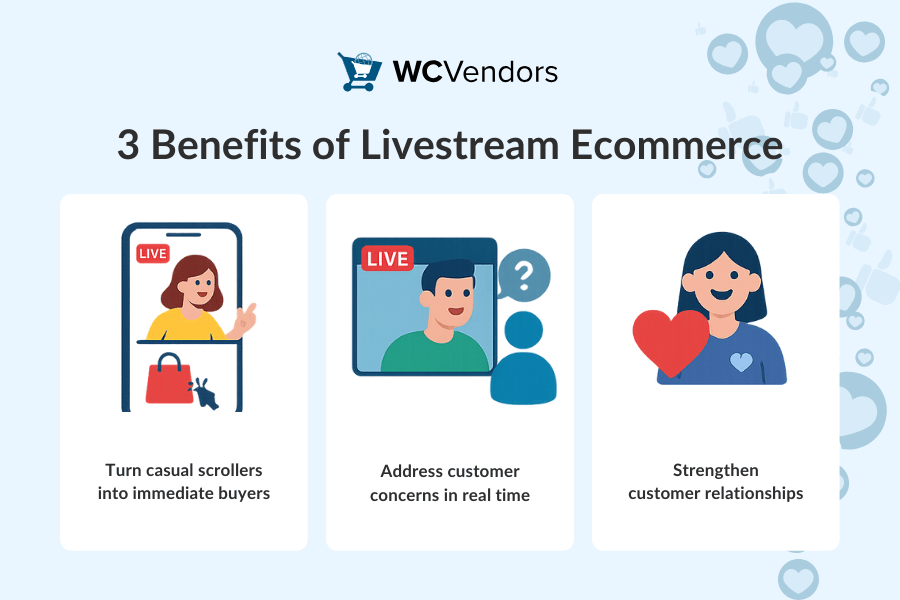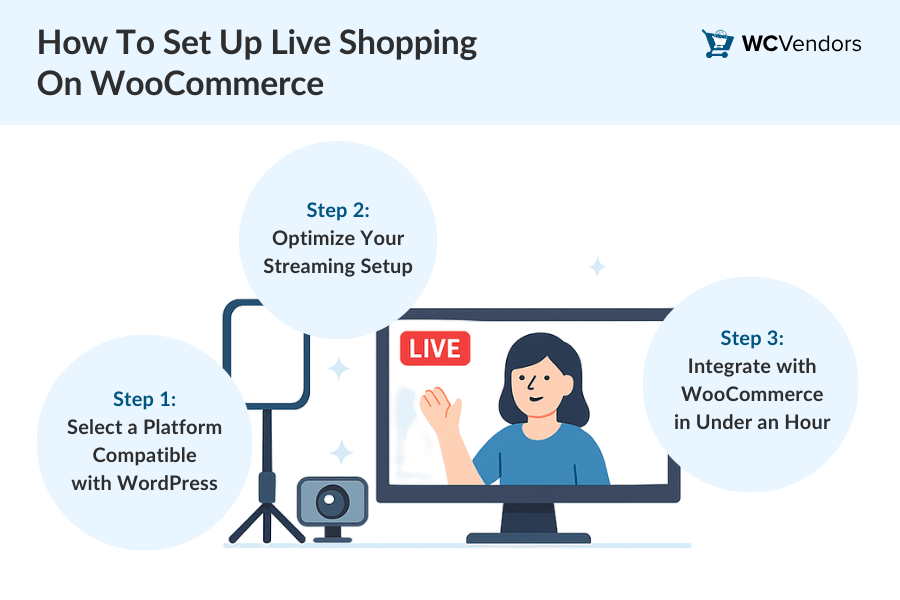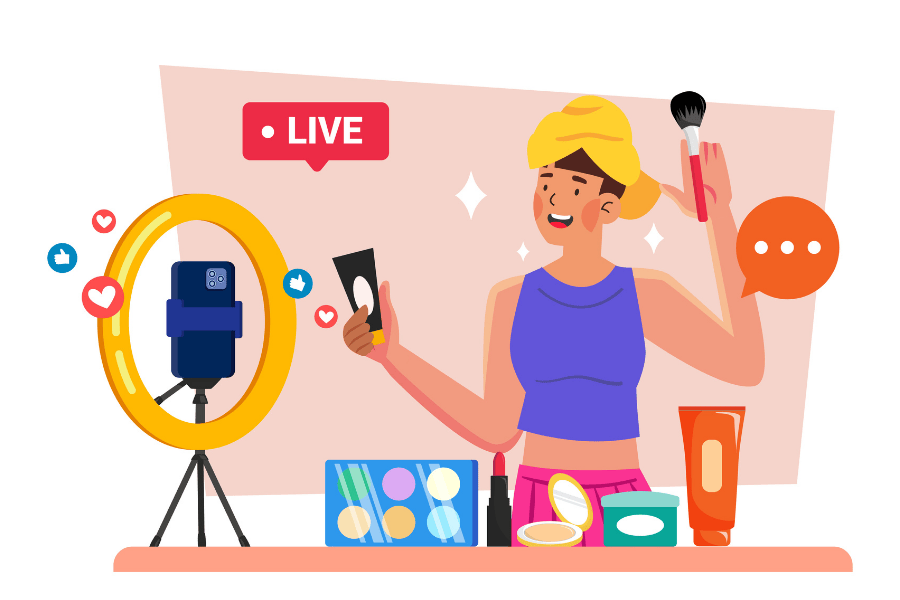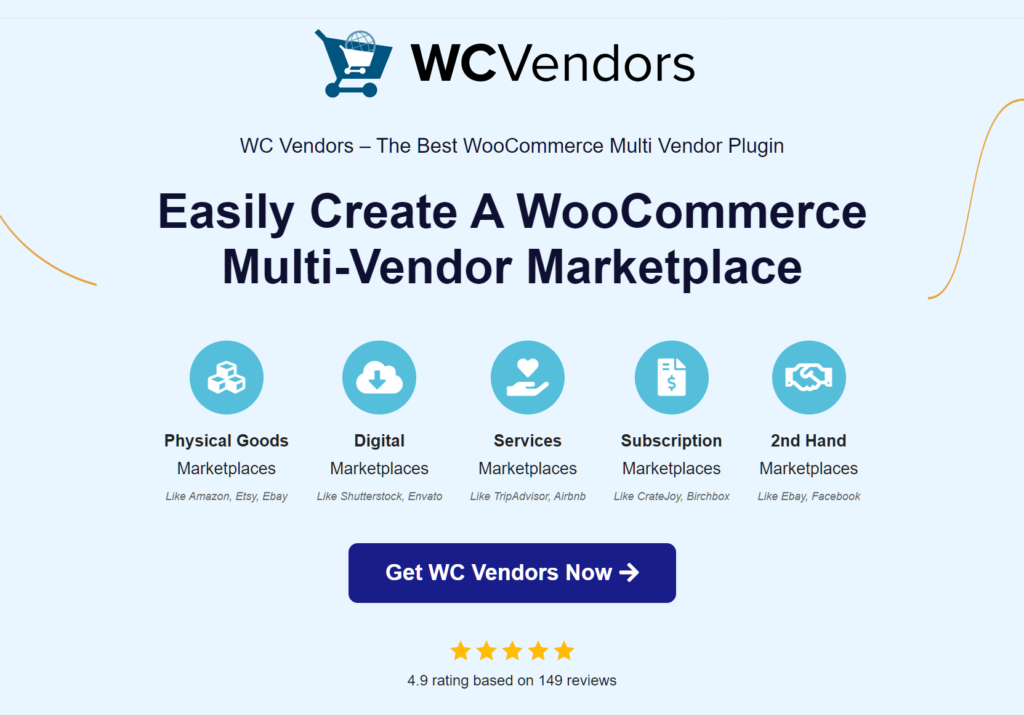
Livestream eCommerce is changing how online sellers present and sell their products. In 2025, this format is gaining attention from businesses looking to stand out.
Recent research indicates that the global live commerce market is expected to reach approximately $3.5 trillion by 2033, growing at a compound annual growth rate (CAGR) of about 11.28% from 2024 to 2033. For sellers on platforms like WooCommerce, live shopping offers a new method to engage shoppers and drive sales.
Imagine selling out your entire inventory in 60 minutes while sitting in your pajamas. That idea isn’t far-fetched. In fact, it’s already happening across the globe! If your WooCommerce store isn’t leveraging this yet, you’re leaving money (and loyal customers) on the table.
Let’s take a closer look at what livestream eCommerce is, why it matters for your business, and how you can start using it to drive sales!
What Is Livestream ECommerce?
Livestream eCommerce, also known as live shopping, is a method of selling products via live video streams. During these sessions, a host—often an influencer or brand representative—displays items, answers viewer questions in real time, and explains product details.
This process allows customers to get a closer look at products and see them demonstrated live rather than relying solely on static images and descriptions.
But this isn’t your grandma’s home shopping network. Modern live shopping platforms let you:
- Embed shoppable videos directly into WooCommerce product pages
- Split revenue automatically between marketplace vendors
- Track viewer engagement down to the second
The evolution started in China (Taobao Live hit $15B in sales in one day), but Western brands like Nordstrom and Sephora now drive 30%+ of holiday sales via live streams.
3 Benefits Of Livestream ECommerce
For WooCommerce store owners, livestreaming adds a dynamic layer of interaction that static product pages simply can’t match. Livestream eCommerce offers opportunities to connect with shoppers in real time while also addressing key pain points that lead to cart abandonment.

Here are three practical benefits worth noting:
1. Turn casual scrollers into immediate buyers
Live shopping introduces urgency through real-time updates like limited stock alerts or flash discounts. When viewers see real-time reactions (e.g., “Only 3 left in stock!”), FOMO kicks in.
This immediacy reduces hesitation and drives faster purchasing decisions.
2. Address customer concerns in real time
“Does this dress look better in red or blue?” “Can this machine handle 10,000 units/hour?” Live video lets you answer instantly.
Shoppers often abandon carts due to unanswered questions. Live video allows direct interaction, clarifying sizing issues, demonstrating product use, or explaining technical specs.
3. Strengthen customer relationships
Livestreams humanize brands. Showcasing artisans, hosting behind-the-scenes tours, or inviting experts for Q&A sessions builds trust. Use live streams to showcase artisans.
Live shopping is a practical way to increase conversions and reduce buyer hesitation. If you’re ready to move forward, the next step is connecting the right livestreaming tools to your WooCommerce store.
How To Set Up Live Shopping On WooCommerce
Setting up live shopping on your WooCommerce store doesn’t require a full production team or a developer on standby. With the right tools and a few practical steps, you can get up and running in less than a day.

Here’s how to begin:
Step 1: Select a Platform Compatible with WordPress
Focus on tools that integrate directly with WooCommerce to simplify setup. For example:
- Channelize.io: Manages multi-vendor sales splits and integrates with WooCommerce payment gateways. Eliminate coding hurdles by working natively with WordPress.
Bonus Tip: Leverage Social Media for Wider Reach
Can’t integrate live shopping directly with WooCommerce yet? Use Instagram, Facebook, or TikTok for streams, and announce event schedules on your store’s homepage or product pages. For example:
- Add a “Live Stream Schedule” banner to your WooCommerce site.
- Use tools like WPStream to broadcast simultaneously to social platforms and your website.
This hybrid approach drives social traffic back to your store while you build a dedicated live shopping setup.
Step 2: Optimize your Streaming Setup
- Camera: A mid-range 4K webcam ensures clarity without overspending.
- Lighting: Softbox lights minimize shadows and create a professional look.
- Technical Tip: Stream at 1080p resolution to balance quality and bandwidth accessibility for most viewers.
Avoid this mistake: Don’t stream in 4K unless your audience has fiber internet. 1080p at 30fps balances quality and accessibility.
Step 3: Integrate with WooCommerce in Under an Hour
- Install your chosen livestream plugin for WooCommerce.
- Connect your streaming platform via API or the plugin’s built-in integration.
- Add a “Watch Live Demo” button or announcement to product pages in your store.
Pro Tip: Run a test stream with a hidden product. Check if purchases trigger real-time inventory updates and if Tax/Shipping rules apply correctly.
Once you’ve set up your live shopping system, the next challenge is knowing how to use it well. That’s where strategy comes in.
Let’s look at five livestreaming approaches that work right now.
5 Live Shopping Hacks That Work In 2025

Here are five effective livestream strategies for 2025, supported by real-world examples and data to support your e-commerce initiatives:
Hack 1: Highlight less explored Product Categories
B2B Example: Machinery suppliers can use livestreaming to present detailed installation guides and maintenance procedures. This method offers potential clients a clear understanding of the equipment’s functionality and upkeep, aiding informed purchasing decisions.
B2C Example: During the COVID-19 pandemic, author Christina Soontornvat adapted to virtual platforms by hosting her book launch on YouTube. This approach enabled her to reach a wider audience despite physical event limitations.
Hack 2: Organize Streams for Optimal Engagement
- First 10 minutes: Teach something useful (e.g., “How to Style Summer Dresses”).
- Next 15-45 minutes: Showcase products that address the topics discussed, highlighting their features and advantages. Answer questions from the audience.
- Final 45-60 minutes: Present exclusive offers, such as discounts or bulk deals, to motivate immediate purchases.
Hack 3: Utilize Streams for SEO Advancement
Posting recorded streams on platforms like YouTube with optimized titles and timestamps linked to products can enhance search engine visibility.
For example, using phrases like “how to use (product name)” can attract viewers seeking tutorials, thereby driving traffic to your e-commerce site.
Hack 4: Collaborate with Influencers as Co-Hosts
Partnering with influencers to co-host your livestreams can significantly increase authenticity and trust. Influencers often have dedicated followings who value their opinions, making their involvement a powerful endorsement.
For example, Benefit Cosmetics utilized Instagram Live for an exclusive product launch, resulting in their mascara being purchased every minute during the event.
Hack 5: Use Live Polls for Inventory Control
Ask viewers to vote on which product to discount.
Incorporating live polls during streams to let viewers choose which products to discount can assist in effective inventory management. This interactive strategy engages your audience and helps clear stagnant stock by aligning promotions with customer preferences.
To see how these ideas work in a real-world setting, the next section looks at Nordstrom’s livestream approach: what they were trying to solve, how they did it, and the results they saw.
Case Study: Nordstrom’s Virtual Events

The problem: When COVID-19 limited in-person shopping, Nordstrom needed new ways to connect with customers and drive sales without physical events. Traditional retail strategies no longer worked in a world where shoppers stayed home.
The fix: Nordstrom hosted over 50 virtual events between 2020 and 2024, including livestreams with designers and brand experts. Viewers could ask questions in real-time, shop featured items instantly, and access exclusive discounts. As a result, this mirrored the energy of in-store experiences online.
Results:
- Digital sales grew 6.4% in Q3 2024, with online purchases making up 34% of total revenue. The company tied this growth partly to virtual events .
- The launch of a dedicated livestream shopping channel let Nordstrom offer personalized styling sessions and live Q&A with experts, keeping customers engaged even after stores reopened.
Why it worked: By prioritizing interaction over passive viewing, Nordstrom gave customers a reason to tune in and not just to shop, but to participate.
Integrating Livestream Ecommerce In Multi-Vendor Marketplaces
Adding livestream ecommerce to a multi-vendor marketplace might sound complex, but it’s absolutely doable, even on platforms built with WC Vendors.
With the right strategy, you can turn your marketplace into a dynamic, interactive shopping destination.
1. Focus on Category-Specific Vendor Streams
Encourage vendors to go live with content that fits their niche. A fashion seller might host a styling session, while a tech vendor could walk viewers through product features. Tailored streams like these keep the audience engaged and coming back for more.
2. Manage Stream schedules effectively
Avoid overlap by creating a shared streaming calendar. This helps maintain smooth performance across your site and ensures customers can attend multiple events without missing out.
3. Provide Support for Vendors
Not every vendor is a natural on camera, so provide some help! Offer resources or training on how to plan a livestream, handle technical hiccups, and promote events on social channels or via email.
4. Use the Right Tools
Plugins like WPStream or Channelize.io offer livestreaming features that work with WooCommerce . These tools make it easy for vendors to go live directly from their dashboards or product pages.
Livestreaming in a multi-vendor setup isn’t out of reach. With a bit of coordination and the right tools, you can bring interactive, high-converting experiences to your entire marketplace.
Conclusion
Livestream eCommerce isn’t just a trend. It’s just a new way of connecting with your audience! You don’t need studio lights or a full crew to get started. Try a simple 15-minute unboxing or demo of your bestselling product.
Getting started is often the hardest part. But if a 65-year-old woodworker can go live and move $8,000 worth of handmade tables in an hour, there’s room for everyone—including you.
To explore livestream eCommerce with confidence, here’s what you’ll want to keep in mind:
- What Is Livestream ECommerce?
- 3 Benefits for WooCommerce Stores
- How To Set Up Live Shopping
- 5 Live Shopping Hacks
- Nordstrom Case Study
- Livestream In Multi-Vendor Marketplaces
Use these takeaways as your starting point. And when you’re ready to hit “Go Live,” remember: it’s not about being perfect, it’s about being present.
Have fun, and let us know how livestream eCommerce goes for you in the comments!
FAQs On Livestream ECommerce
What is livestream ecommerce?
Livestream eCommerce integrates live video streaming with online shopping, allowing brands to showcase products in real-time. Viewers can interact with hosts, ask questions, and make purchases during the broadcast, creating an engaging and immediate shopping experience.
What are the benefits of incorporating livestream shopping into my ecommerce strategy?
Integrating livestream shopping can lead to higher conversion rates, increased customer engagement, and enhanced brand trust. Companies adopting live commerce have reported conversion rates around 30%, nearly ten times higher than standard ecommerce rates.
How can I set up a successful livestream shopping event?
To host a successful livestream shopping event, select a platform that aligns with your target audience, plan the event’s content and schedule, and promote it through various channels. Make sure you have enough stock and be ready to interact with viewers and show products live.
What types of products are best suited for livestream ecommerce?
Livestream works best for products that need demos like fashion, electronics, or beauty. Live demonstrations can clarify important product features and help customers make informed purchasing decisions.
How can multi-vendor marketplaces implement livestream shopping?
Marketplaces can offer vendors tools and training to run their own live events. This lets sellers connect with customers directly and creates a more engaging shopping experience overall.

